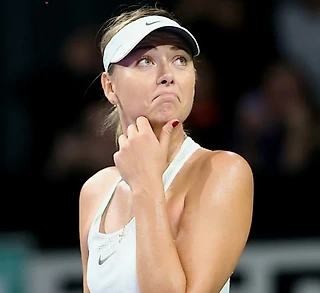Analysing ATP and WTA prize money
by Andrew Moss
Tennis is having quite a year: widespread allegations of match-fixing in January; Maria Sharapova’s admission earlier this month of testing positive for the hitherto obscure meldonium; and now, sexism.
Raymond Moore, now the former CEO of the Indian Wells tournament, resigned this week following crude comments about the strength of the women’s game: the women’s tour “rides of the coattails of the men’s game”; certain female players are “physically and competitively attractive” and finally that “lady players” (no kidding) should “go down every night on [their] knees and thank God that Roger Federer and Rafa Nadal were born because they have carried this sport”.
The wider debate that followed in the media and on social media in particular – which soon became focused on the merits of prize money equality – was predictably ugly, and only occasionally articulate (Steve Tignor’s piece was excellent). For the umpteenth time, Serena Williams and Billie Jean King had to defend the women’s tour; but if you must listen to a man on this, the refreshingly progressive Andy Murray will always set you right.
For what it’s worth, my view is that jointly run events – the small number of events where ATP and WTA tournaments both take place – should always have equal prize money: morally, it is the right thing to do; but in addition, the game is more popular and commercially attractive with large joint events; fans turn up to support players from both tours; and women’s matches can be as exciting as men’s or as forgettable as men’s. And finally, the popularity and commercial attractive of both tours may wax and wane, making equal prize money a decent hedge against one tour's downturn.
Prize money analysis
What many people may not be aware of – and this is the data element of this post – is that outside of most of the jointly run events, players on the ATP tour significantly out earn their WTA peers when it comes to prize money. In a bleak echo of the wider societal situation, women on the WTA tour earn 76 cents to the ATP’s dollar. This can clearly be seen by breaking down the tour’s prize money both by ranking and by event.
Firstly by ranking
Below is a chart that sets out the singles prize money earned by the top 100 ranked players of both the ATP and WTA tours during 2015. Given the prize money disparities between the top 10 and the rest of the top 100 (something to which we will return in a future post), the data has been presented on a logarithmic scale – which basically makes it easier to meaningfully fit the data on one chart.
ATP / WTA Singles prize money 2015, earned by ranks 1-100 (logarithmic scale)
Chart 1 by rank (post)
As can be seen, WTA players consistently earn less than their equivalently ranked peer on the ATP tour. Fully 66 of the men’s top 100 earned more than their equivalently ranked female peer. Djokovic, Murray and Federer, ranked 1 to 3, each earned between 47% and 49% more than, respectively, Serena Williams, Halep and Muguruza (ranked 1 to 3). Outside of the top 3, the top 100 men each earn on average USD 100,000 in prize money more than the top 100 women.
Overall, in 2015 the total singles prize money won by the ATP top 100 was USD 123.8m; that by the WTA top 100 USD 93.6m: 76 cents in the dollar.
Secondly, by tournament
It would be tempting to think that the above chart was the result of the men’s top 100 earning a greater proportion of the overall prize money available to them on the ATP tour than the women's top 100 was able to do on the WTA tour. However, as can be seen from the below chart (analysing tournament prize money from 2014), it is the fact that the WTA tournaments do not provide anything like the same prize money. WTA tournaments - again, consistently - pay less prize money than ATP tournaments.
ATP / WTA Singles prize money 2014, by tournament (logarithmic scale)
Chart 2 by tournament (post)
For the purposes of elaborating on the chart's annotations, the tournaments break down into 5 categories.
Grand Slams. The four biggest tournaments in tennis are the slams, they are run jointly for ATP and WTA players and since 2007, all slams have awarded prize money equally between men and women (even if the US Open and Wimbledon award considerably more prize money per event, approximately USD 15m, than the Australian and French Opens, approximately USD 12m).
ATP Masters 1000 and WTA Premier Mandatory events. This group includes four tournaments. Two of these are joint ATP-WTA events run and award equal prize money (Indian Wells and Miami, approximately USD 4m for the ATP and WTA tournaments at each event); one is jointly run but bizarrely offers equal prize money with the exception of paying women a few thousand euros fewer in rounds 1 and 2 (Madrid). Each tour also has one other marquee event run separately. Both are in China – Shanghai for the men; Beijing for the women – and each offer singles prize money of over USD 3m.
ATP Masters 1000 and WTA Premier 5 events. Large differences in prize money kick in at this point while also exposing unequal prize money at joint events: Rome and Cincinnati are both joint events where the men’s events award prize money of over USD 2.5m; while the women’s events award under USD 2m. If, as Ben Rothenberg pointed out, there were tournaments that should commit to prize money equality, it is these two and Canada (“Canada” is also a joint event although its tournaments are held concurrently in different cities).
and 5. ATP 500 and WTA Premier events / ATP 250 and WTA International / 125k events. As a result of prize money increases on the ATP tour over the last few years, the vast majority of ATP tournaments provide greater levels of prize money that their equivalent WTA event.
Mandating prize money equality, or just the right thing to do?
Unfortunately, it is not so easy to mandate prize money equality. The only events where this has been possible are joint events, in particular the grand slams, where equality has been hard won over a number of years. For other events (the majority of events on the ATP and WTA tours), the ATP and WTA tours are run separately, and bring in their own sponsorship and television rights deals. Accordingly, they operate on different commercial planes, awarding prize money differently. And it is these "market forces" that give rise to the justification raised by some as to why ATP events have greater levels of prize money than WTA events. Djokovic said in his final Indian Wells press conference that he would be happy for WTA players to earn more than ATP players if merited commercially.
It’s worth making a note to remember this: popularity of the men’s and women’s tours has tended to be cyclical. It was not so long ago – the late 1980s to early 1990s – that the women’s game was commercially more attractive than the men’s game. And although it is the current ATP Big 4 that have made men’s tennis more lucrative, this has not happened at the expense of the women’s game: Serena and others have seen to that.
Having committed to increased prize money in the current lucrative era, though, the ATP may find itself in a financial and marketing hole when the Big 4 retire. If that were to happen, the ATP may well rely on the popularity of joint events to sustain itself.
And so equal prize money at joint events is not just the right thing to do morally; it’s not just that fans will support players from both tours; and it’s not just that good and bad matches are seen on both tours. It’s also that equal prize money is each tour’s insurance policy. If the ATP does find itself in a hole, better not to be on record in defence of market forces…
Andrew Moss | March 24, 2016 at 12:06 am
>
Просмотров всех постов блога на эту неделю:
Просмотров всех постов блога в марте 2016 года:








